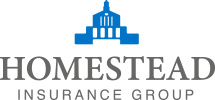Home Insurance consists of several basic coverages: Dwelling, Contents, Other Structures, Personal Liability, and Optional Coverage. It is very important that each one of these coverage options is reviewed when purchasing coverage, and reviewed annually as well. Home Insurance is different than auto insurance since your home in most cases is an asset, and typically appreciates in value over time. This is why an annual review with an insurance professional is a must to make sure your coverages are keeping up with current market conditions.
Key Points to Consider When Choosing Your Homeowners Insurance
Dwelling Coverage
By far the most import aspect of Homeowners Insurance. Covered losses usually consist of: Fire, Theft, Vandalism, Weather related damage (excluding Flood), and Smoke Damage. The assumption of using your tax assessment, or your home mortgage balance to determine how much coverage you need is false. Your dwelling should be insured at “replacement cost” to rebuild your home in the event of a total loss. An Insurance agent should be able to help you to determine the insurable value of your home. Insuring your home this way typically will Guarantee that the Insurance Company will rebuild your home. Beware, not insuring your home at replacement, will lead to a lower claim payment that will typically not cover all the damages to your home, so be careful and use a professional agent.
Contents Coverage
Sometimes referred to as “Personal Property” are quite simply your personal items that you own. Again your policy should consist of replacement coverage for your contents too. This will make sure if you have a loss, the Insurance Company will not depreciate the value of your belongings based on their age. Covered losses usually consist of: Fire, Theft, Vandalism, Weather related damage (excluding Flood), and Smoke Damage. You also will have special limitations for certain items such as Jewelry, and Guns. These items should be insured separately under an Inland Marine/Personal items Policy.
Other Structures
Any structure not attached to the home is considered an “other structure”. These typically will be Detached Garages, Sheds, Fences, etc. Your policy will automatically come with a set amount of coverage However; you will want to review the coverage amount to make sure it would be enough to cover all of your structures.
Personal Liability
This is similar to Auto Liability Coverage. Any property damage, or injury that occurs on/off your property will be covered under your Personal Liability Coverage. Some examples of covered incidents would be: A. Cutting a tree down and it landed on your neighbor’s home. B. You were in a golf tournament, and injured someone with a golf ball you hit. The main thing here is to make sure you have adequate Liability Coverage. We recommend a minimum of $300,000, but like to see our clients carry $500,000. You may even want to go higher, but that would be covered under a Personal Umbrella Policy.
Optional Coverages
You do have several other optional coverages you can pick up under an Homeowners Insurance Policy. A. Water Backup Coverage: This is the single most important option under Homeowners Insurance. This coverage will provide payment to you in the event of a claim resulting a water backup from a Sink, Toilet, Bathtub, or any pump inside the home. Even though this does not provide Flood coverage, this usually fills in the gaps for all other losses resulting from water. If you have a basement, this is a necessity, and it has a minimal cost as well. B. Ordinance or Law Coverage: This coverage is usually meant from older homes, historic homes, or homes that required an exception from a local government building authority. In the event of a claim, this coverage will pay for any additional costs that may arise from having to meet new reconstruction requirements by your local government. If you home fits in any of the mentioned categories, you should discuss this coverage with your agent.
Keeping Your Homeowners Insurance Low
There are many things you can do to keep your coverage affordable. Here are a few cost savings suggestions:
- Increase your deductible to $2500. Doing this could save you several hundred dollars a year. Also if you had a $90,000 loss would $2500 paid out of your pocket really matter?
- Get an alarm system. This will typically lower your rate by 15-20% a year.
- Combine all your policies with one company. Having all your insurance in one agency can save you 20-40% a year, and makes it easier for you to manage.
- Have your dwelling insurance amount reviewed every two years. If you remember before, Insurance Companies view your home as an asset. Therefore, they will automatically increase your insured value by 2-4% a year. In some cases, this could lead to being over insured, reviewing every two years you can adjust down if needed.
Take Homeowners Insurance Advice from an Insurance Agent
Do not believe everything your accountant, home builder, or mortgage lender tells you on home insurance. This is why they are experts in their own profession, and not an insurance agent. You don’t need to take advice that could leave you with a huge coverage gap. It’s best to leave this discussion between you and your insurance agent.
